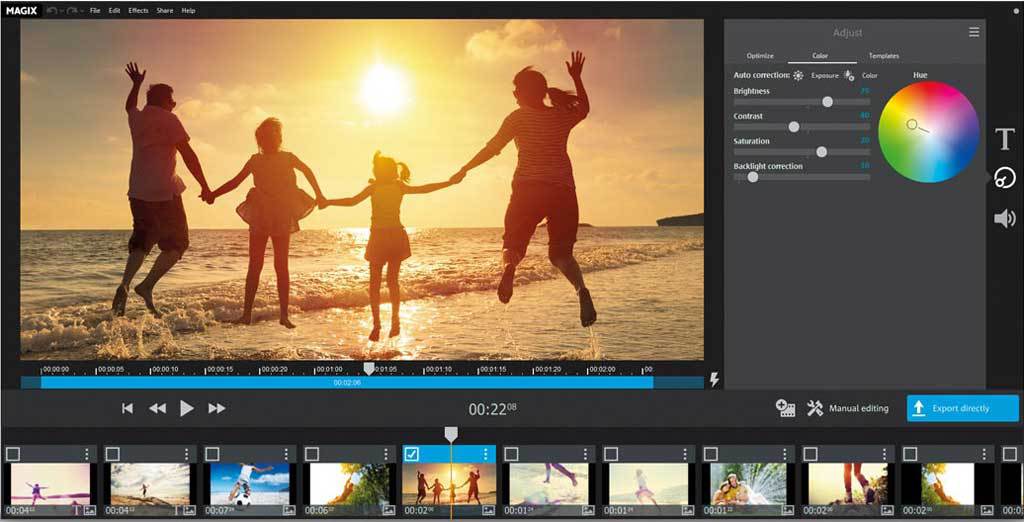

- #Fastcut for mac how to
- #Fastcut for mac mac os x
- #Fastcut for mac mac os
- #Fastcut for mac software
- #Fastcut for mac password
#Fastcut for mac password
Some apps installed using the Mac package installer will prompt you for a password when you try to move it to the Trash. Most 3rd party apps can be smoothly uninstalled in that way, but you cannot delete built-in apps by doing this.
#Fastcut for mac mac os
This drag-to-delete method works in all versions of Mac OS X. Right click the Trash icon and select Empty Trash option to start the uninstall.Drag FastCut 3.1.3 to the Trash (or right click on it and then select Move to Trash option).Open up the Finder, click Applications on the left side, and then select FastCut 3.1.3.Option 1: Drag FastCut 3.1.3 icon to the Trash If FastCut 3.1.3 cannot be quit normally, you can select the app in Activity Monitor, click the large red “Quit Process” button in the left corner and click Force Quit button in the pop-up dialog. To deactivate an app, right click its icon in the dock and select Quit option (or choose FastCut 3.1.3 > Quit FastCut 3.1.3 on the Menu bar).Īlso, you can access the Activity Monitor (located in /Applications/Utilities/ folder), and see if there is any background process pertaining to the app. Prior to the removal of FastCut 3.1.3, you should first log into your Mac with an administrator account, and turn FastCut 3.1.3 off if it is running.
#Fastcut for mac how to
In this post we will discuss the following questions: (1) What is the correct way to uninstall FastCut 3.1.3? (2) How to ensure all its accompanying components are removed safely? And (3) is there a shortcut for both Mac novices and experts to take to accomplish FastCut 3.1.3 removal effortlessly? Conventional Steps to Uninstall FastCut 3.1.3 for Mac Even for the experienced users, they may also get lost when trying to uninstall a problematic, stubborn or even malicious application. In the latter case it is quite necessary to clean out those junk files from your Mac for complete removal.įor some novice users, they may have no idea how to remove FastCut 3.1.3 in a proper way. These vestiges can be very small in size, thus leaving them alone may not affect your Mac performance, yet they can also be a large chunks of useless files that occupy a large portion of your hard drive space.
#Fastcut for mac software
However, a fact is often neglected that, even the stand-alone software may might still leave its configuration and preferences files on multiple system directories after you carry out a basic uninstall. Generally speaking, most Mac applications are separate bundles that contain the executable and any associated resources for the app, and therefore users can easily remove any unwanted software (if they are installed properly) from their Macs. In normal cases Mac users just need to simply drag and drop the target app to the Trash and then empty the Trash to perform the standard uninstallation. Uninstalling applications in macOS/Mac OS X is quite different from that in Windows operating system.

Things you should know about Mac app removal: How to uninstall FastCut 3.1.3 on Mac computer? If you encounter problem when trying to delete FastCut 3.1.3 as well as its associated components, read through this removal tutorial and learn about how to perfectly remove any unwanted applications on your Mac.
#Fastcut for mac mac os x
Now you can join Catalina.Tips to Perfectly Uninstall FastCut 3.1.3 on Mac OS X Recently, a foreign developer found a bundle named incompatibeappslist.bundle in / library / apple / library / bundles / of MacOS Catalina, which contains 235 incompatible applications with Catalina.īefore upgrading, you may want to check whether the application below contains the one you often use. Introduction to 235 applications incompatible with Mac OS Catalina: For users who often need to use PS, it’s a bit annoying. For example, in Photoshop CC, when changing the file format, the suffix name will not be changed automatically and needs to be modified manually. Not only that, some applications can run in Mac OS 10.15, but there are some more fatal bugs. The main reason is that the new system no longer supports 32-bit applications, which means a large number of applications will not run. The official version of Mac OS 10.15 has been pushed for some time, but many users still dare not upgrade.


 0 kommentar(er)
0 kommentar(er)
